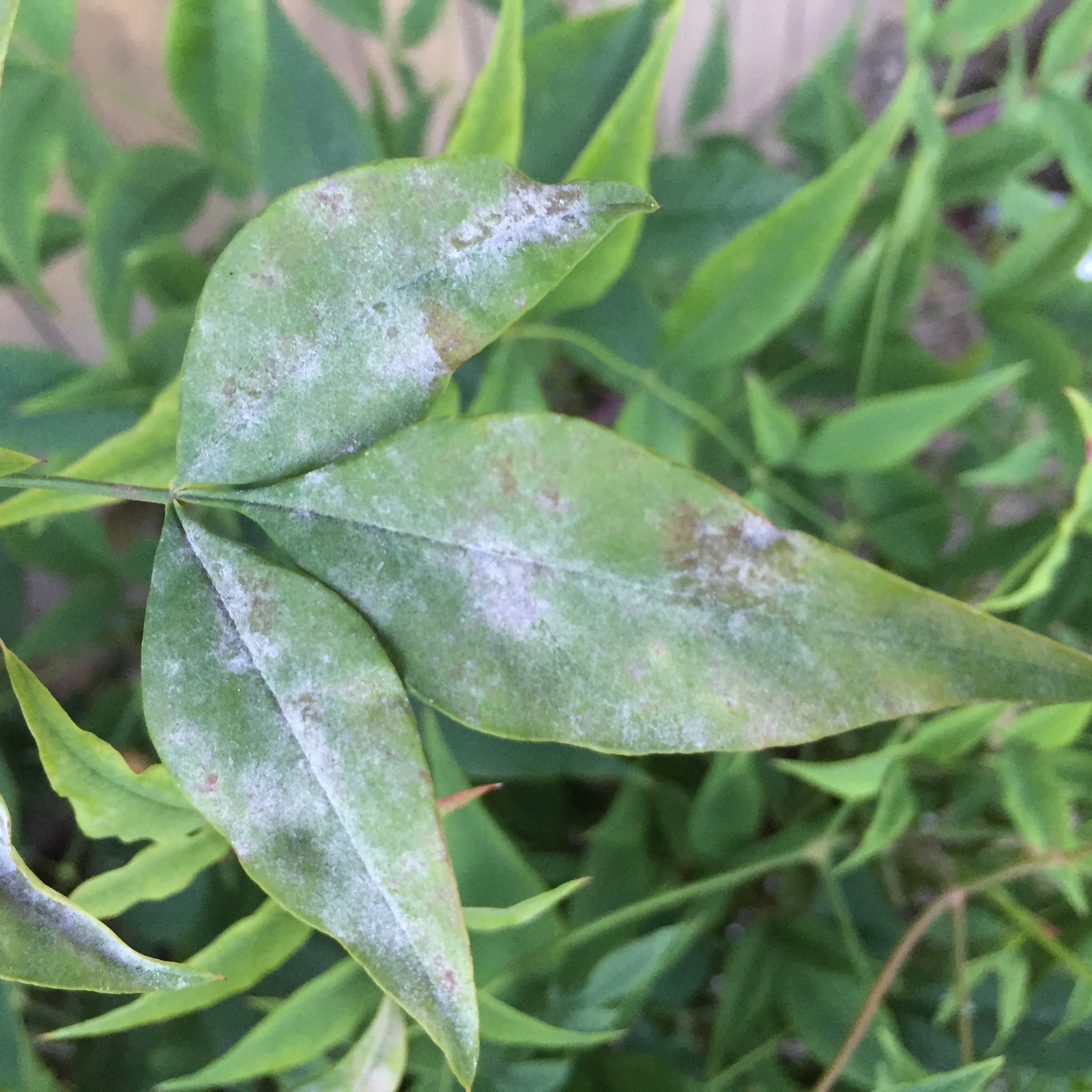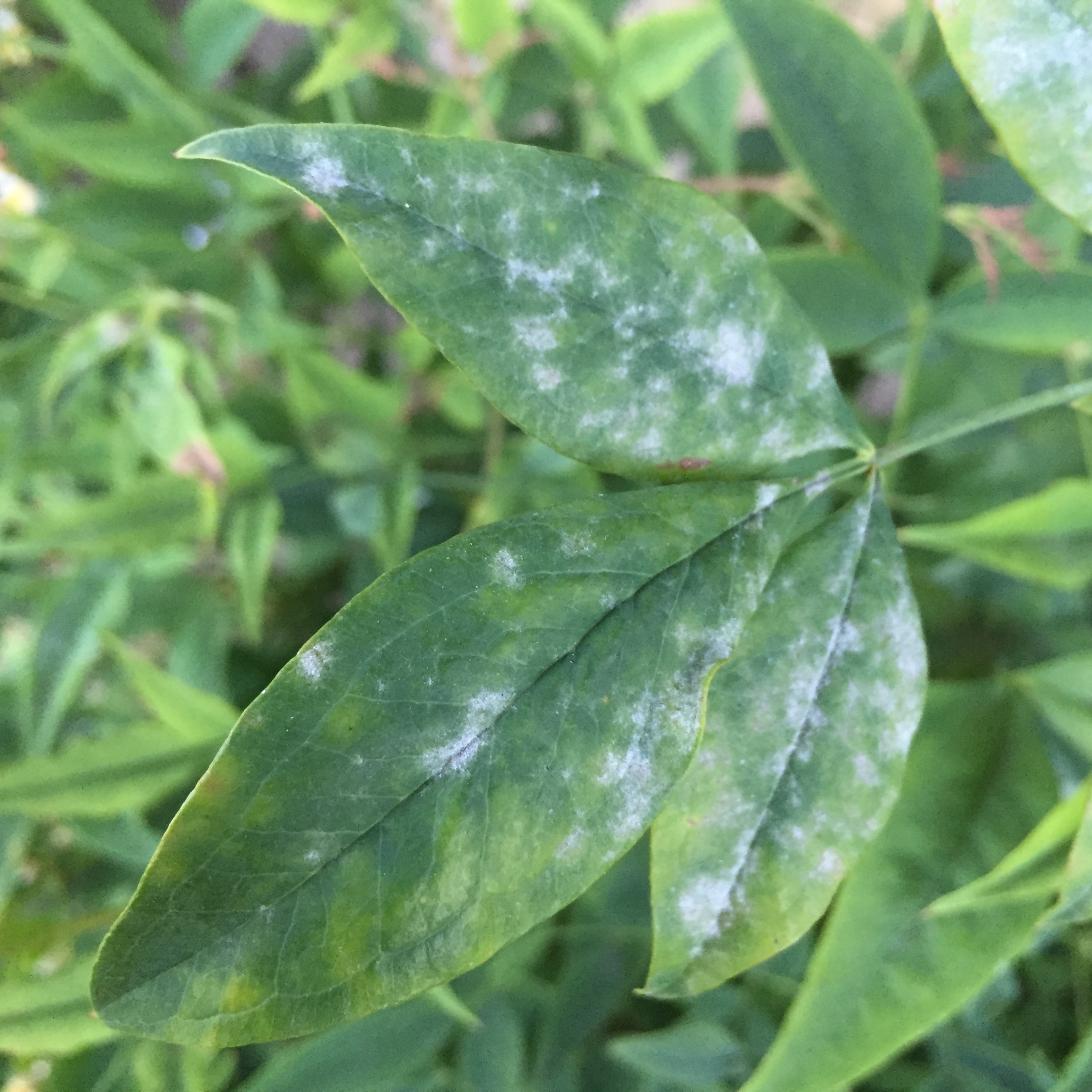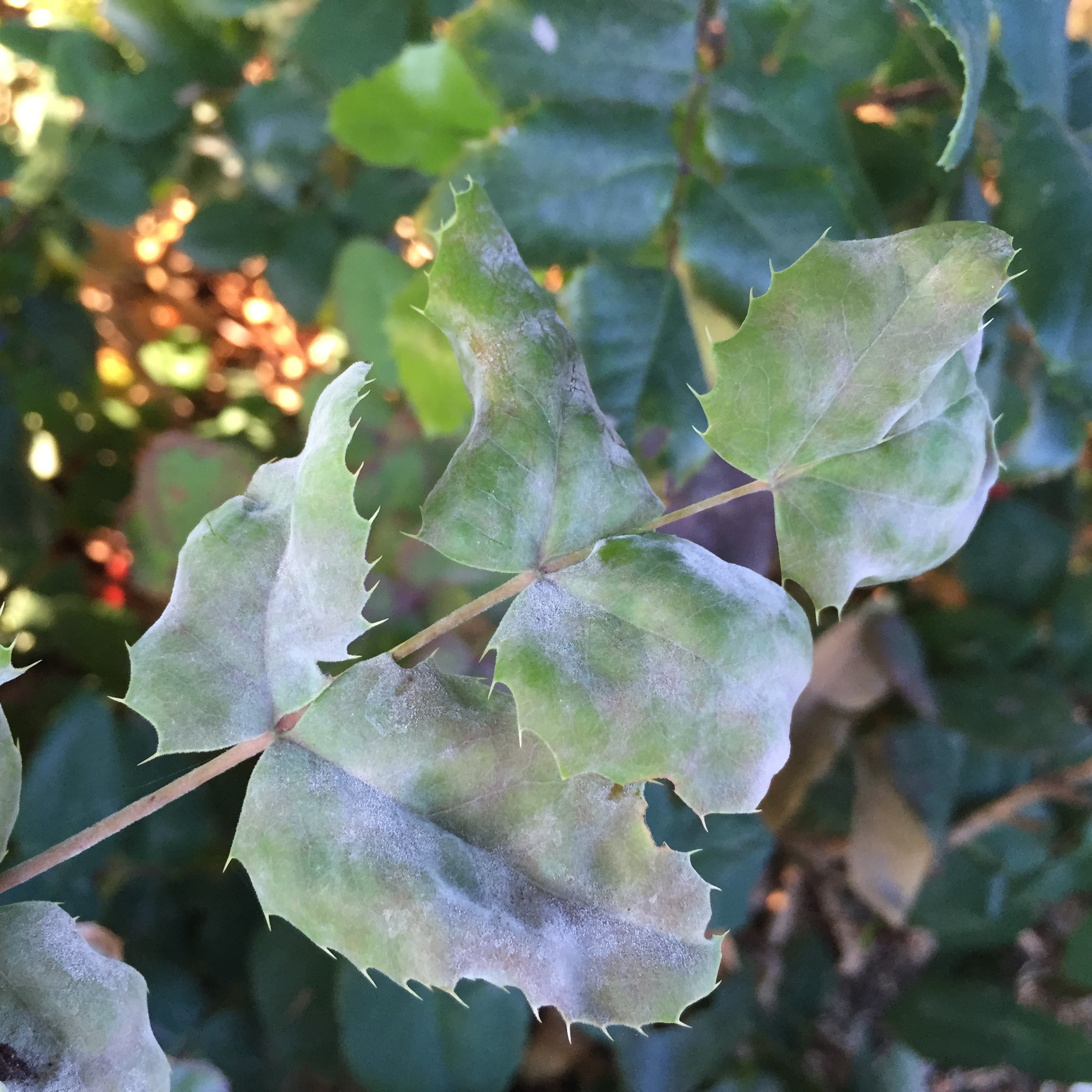Powdery mildew is a fungus that regularly plagues the PNW. Most gardeners in our region will have to control it in their gardens at some point. It seems to be everywhere! Luckily, it is fairly easy to manage and an infection doesn't have to mean the end of your beloved garden!
WHAT IS POWDERY MILDEW?
Powdery mildew is a disease caused by many different species of fungi. The disease is usually fairly easy to identify since it will appear as though powdered sugar covers the leaves. Fungal colonies expand to form whitish, circular patches on the host plant that can develop a powdery appearance as it grows and spreads. As it ages, it often becomes gray or brown and may cover the entire surface of the leaves, stems, and even fruit.
While it is rarely fatal, it will stress and weaken plants. If enough leaf surface is covered with the mold, photosynthesis is inhibited and the plant is unable to make as much energy as it needs. The affected leaves may yellow, droop, and fall prematurely.
It thrives in humid conditions and stagnant air found among plants growing too close together. The pathogen overwinters in plant debris and within the buds of infected plants. Spores start forming in early spring and spread fairly easily by wind, insects, and water splashed up from soil onto leaves.
MANAGEMENT OPTIONS
Powdery mildew can be easily controlled when you take action sooner rather than later. There are multiple management methods listed below. Try to select non-chemical options as your first choice, and then introduce chemical means if you deem it necessary. In our following suggestions for how to manage a powdery mildew infection, we begin with suggesting the mildest, non-chemical options and finish by recommending stronger chemical products.
NON-CHEMICAL defense
Practice good gardening culture. The first line of defense is to buy top-quality, disease-resistant plants from a reputable nursery (hey, Swansons!). Consider the environment of the plants, too. Give them the best start with well-drained soil, the correct amount of sun, and plenty of space for good air circulation.
If you're aware of mildew-prone plants, try not to plant them too closely next to one another so there is a smaller likelihood they will spread disease between them. For example, lilacs and hydrangeas are likely to suffer from powdery mildew so you may benefit by not planting them next to each other in the garden.
Be vigilant. Don't be fooled into thinking mildew only grows in wet, cool, dark places. Powdery mildew is unlike most fungal pathogens in that it's the only one that lives on the surface of leaves and doesn't require surface moisture for infection. This disease is often most prevalent around the summer season, especially when there are warmer days and cooler nights. Dry foliage, high humidity, low light, and sustained moderate temperatures are all conditions that favor mildew growth.
Water deeply and thoroughly. Drought-stressed plants are much more susceptible to disease than well-watered ones. Mildew pathogens more easily infect plant tissue that has dried out from stress, drought, or other damage. When watering plants in the landscape, the soil should be moist 10-12 inches deep. Avoid overhead watering, which will wet the foliage and possibly splash soil-born fungi onto leaves. Watering in the morning is ideal since watering in the late afternoon or evening provides a greater chance of transplanted fungi infecting the plants.
Destroy infected plant material. The best defensive treatment to protect the rest of the landscape is to break the powdery mildew life cycle by removing infected plant material from the area and destroying it. The idea is to get the spore-producing mildew off the plant and open up the structure to allow better air circulation. Be sure to remove dead, obviously diseased stems, and gather fallen material. Don't add any infected materials to a personal compost pile. All debris should be removed from the area and discarded into city yard waste.
NATURAL ERADICANTS
A variety of effective controls are available for managing powdery mildew diseases. Many, such as these listed here, are not intended to eradicate a powdery mildew infection, but they will help to control or prevent it. Below, organic products are listed from the most gentle to increasingly more intensive. Users should be careful to follow label instructions for all products.
Applying a product prior to direct sun exposure creates a higher risk that the foliage will burn. It is generally best to apply fungicidal products in times when the infected plant will be out of full sun and insect activity is low, such as in the early morning or evening.
Serenade. This biological fungicide contains the bacteria Bacillus subtilis, which eats the fungus spores. This is a product you can use at almost any stage in the life cycle of powdery mildew. You can also use Serenade as a prophylactic (aka prevention) on plants that you are aware are mildew-prone. Apply Serenade when plants are naturally dormant for overwintering spores as well as on active symptoms.
Horticultural oils. The most gentle include Neem oil and All Seasons Oil, both which kill the mildew by coating the leaves and acting as a suffocating agent to mildew spores. Use at the first sign of infection and spray on all surfaces, including the undersides of leaves. Apply to new leaves as the plants grow, and reapply as directed on the label.
*Liquid copper spray. Liquid copper is the most effective, yet most potent fungicide listed here. Follow the same instruction as with the horticultural oils; spray the entire plant surface and new growth, then reapply as directed.
*We want to caution against using a copper fungicide if you live near fish or wildlife, as it can be harmful. If that is the case, consider using a sulfur-based fungicide as a substitution.
Powdery mildew can be an annoyance, but you can bring vitality back to your garden! With careful plant selection, good watering and spacing habits, and a range of treatment options available, powdery mildew can controlled.
As always, feel free to come in and ask our friendly experts about any disease issues you may be experiencing. Or, we can help you while you stay home! Simply post a photo with your question on social media using #heyswansons and we'll reply with our best insights and suggestions.





